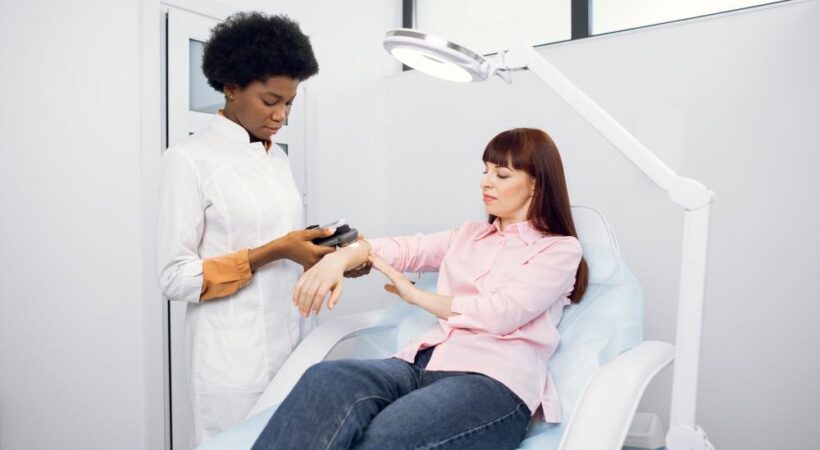One of the best methods to identify skin irregularities early, when they are most curable, is to have regular tests for skin cancer. If you have a scheduled appointment, taking a few steps to prepare can help your dermatologist perform a thorough and accurate examination. Scheduling regular Skin cancer screening in NYC with a qualified dermatologist can help detect potential issues early and provide peace of mind through proactive skin health management.
Understand The Purpose Of The Screening
A skin cancer screening is a comprehensive check of your skin from head to toe. The goal is to identify suspicious moles, lesions, or other skin changes that could indicate precancerous or cancerous conditions. Because early detection enables timely treatment and increases the likelihood of positive results, it is essential.
Review Your Personal And Family History
Before your appointment, take time to review your personal medical history, particularly any past skin conditions, moles, or previous diagnoses of skin cancer. You should also be aware of your family history, as skin cancer—especially melanoma—can be hereditary.
Write down relevant information such as:
- Previous skin biopsies or treatments.
- Any moles that have changed in shape, size, or color.
- Instances of severe sunburn in the past.
- Family members diagnosed with melanoma or other skin cancers.
Providing this background helps your dermatologist assess your level of risk.
Do A Self-Check Beforehand
Use a hand mirror and a full-length mirror to conduct a self-examination in a well-lit space, a week or a few days prior to your screening. Look for:
- New moles or spots that weren’t there before.
- Changes in existing moles (size, shape, color, or texture).
- Sores that won’t heal.
- Areas of skin that itch, bleed, or crust over.
Make note of any concerning areas so you can point them out during your appointment.
Remove Nail Polish And Makeup
Your dermatologist will need to examine your skin thoroughly, including your nails and face. Nail beds can sometimes show signs of melanoma, so clear nail polish or going without polish entirely allows for a better assessment. Similarly, remove makeup so your dermatologist can see your skin without obstruction.
Wear Comfortable, Easy-To-Remove Clothing
The screening involves checking your entire body, including areas you may not think about, such as your scalp, behind your ears, between your toes, and your back. Wearing loose-fitting clothing that’s easy to take off and put back on will make the process smoother.
Avoid Tanning Or Excessive Sun Exposure Beforehand
A tan or sunburn can make it harder for your dermatologist to detect subtle changes in your skin’s pigmentation. Avoid tanning beds and limit sun exposure in the days leading up to your appointment. If you must be outdoors, use a broad-spectrum sunscreen and wear protective clothing.
Bring A List Of Medications
Certain drugs may make you more sensitive to the sun or change the way your skin looks. Bring a complete list of prescription medications, over-the-counter drugs, and supplements you take. This will help your dermatologist understand any changes that might be related to medication use rather than a skin condition.
Be Prepared To Ask Questions
Your skin cancer screening is also a chance to learn about your skin health. You may want to ask:
- How often should I get screened?
- What changes should I look for at home?
- Are there preventive steps I should take based on my skin type and history?
- Should I schedule additional follow-up appointments?
Asking questions will help you leave the appointment feeling informed and confident about your skin care plan.
What To Expect During The Screening?
During the screening, your dermatologist will visually inspect your skin, sometimes using a dermatoscope—a magnifying device with a light—to examine spots more closely. A biopsy can be suggested by your dermatologist if any questionable regions are discovered. To do this, a little tissue sample must be taken for laboratory examination.
The process is generally painless, aside from minor discomfort if a biopsy is needed. Most appointments last between 15 and 30 minutes, depending on the number of spots being examined.
After The Screening
If your dermatologist finds anything concerning, they will discuss next steps, such as monitoring the area, performing a biopsy, or scheduling further treatment. Even if no issues are detected, follow-up screenings should be scheduled according to your risk level—annually for most people, and more frequently if you have higher risk factors.
Final Thoughts
Preparing for your skin cancer screening ensures a smoother, more effective appointment. By reviewing your history, performing a self-check, and removing barriers to examination, you help your dermatologist make the most accurate assessment possible. Remember, early detection is key—being proactive now could protect your skin and your health in the future.
